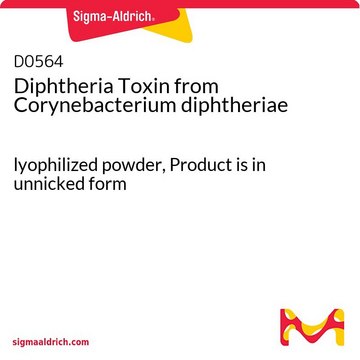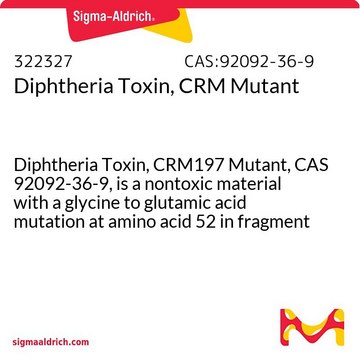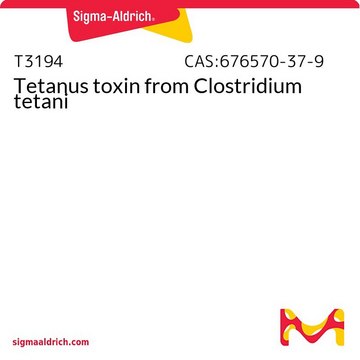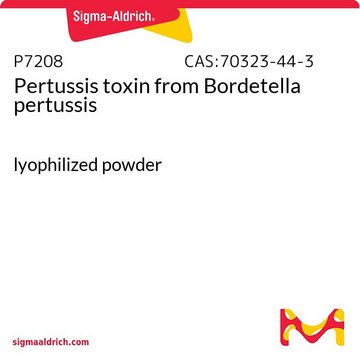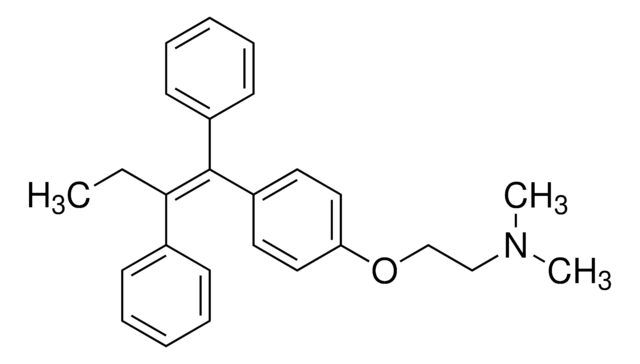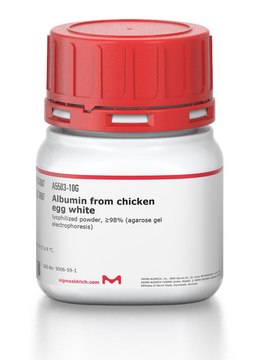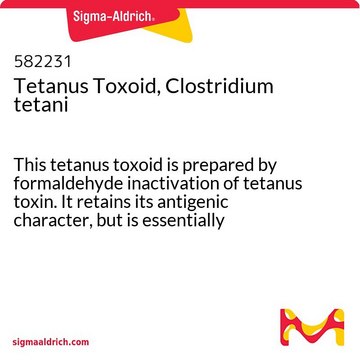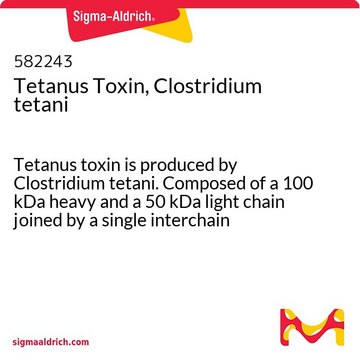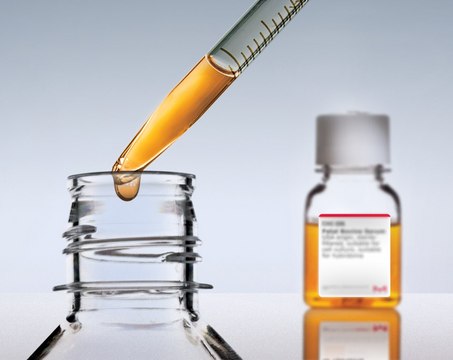D2189
Recombinant CRM197 expressed in Pseudomonas fluorescens, [Glu52]- Diphtheria toxin
lyophilized powder
Synonym(s):
[Glu52]-Diphtheria toxin from Corynebacterium diphtheriae, CRM 197
About This Item
Recommended Products
Looking for similar products? Visit Product Comparison Guide
Packaging
Physical form
Storage Class Code
11 - Combustible Solids
WGK
WGK 3
Flash Point(F)
Not applicable
Flash Point(C)
Not applicable
Personal Protective Equipment
Regulatory Information
Choose from one of the most recent versions:
Already Own This Product?
Find documentation for the products that you have recently purchased in the Document Library.
Which document(s) contains shelf-life or expiration date information for a given product?
If available for a given product, the recommended re-test date or the expiration date can be found on the Certificate of Analysis.
How do I get lot-specific information or a Certificate of Analysis?
The lot specific COA document can be found by entering the lot number above under the "Documents" section.
How do I reconstitute Product D2189, [Glu52]-Diphtheria toxin from Corynebacterium diphtheriae?
The vial can be reconstituted with 1.0 mL of sterile water. Each vial contains 1 mg of Diphtheria toxin CRM mutant, sodium phosphate buffer, and lactose. It can sometimes be hard to get the product into solution due to the lactose used as a stabilizer. The supplier suggests slight warming (to at least room temperature or 30 °C, but not more than 37 °C) followed by a brief vortex to break up the filaments.
What kind of mutant, is Product D2189, [Glu52]-Diphtheria toxin from Corynebacterium diphtheriae, and how is this product different from Product No. D0564?
Product No. D0564 is the wild-type toxin and possesses enzymatic activity. The Glu52 diptheria toxin, also known as CRM197, has a mutation in fragment A (a glycine to glutamic acid substitution at position 52) that results in the complete loss of enzymatic activity. More information on the mutant can be found in the following reference: Uchida, T., Pappenheimer, Jr., A.M. and Harper, A.A., J. Biol. Chem., 248, 3851-3854 (1973).
What is the molecular weight of Product D2189, [Glu52]-Diphtheria toxin from Corynebacterium diphtheriae?
On reducing SDS gels, this protein migrates as a single band of an approximate molecular weight of 63,000 Daltons.
What is the Department of Transportation shipping information for this product?
Transportation information can be found in Section 14 of the product's (M)SDS.To access the shipping information for this material, use the link on the product detail page for the product.
My question is not addressed here, how can I contact Technical Service for assistance?
Ask a Scientist here.
Our team of scientists has experience in all areas of research including Life Science, Material Science, Chemical Synthesis, Chromatography, Analytical and many others.
Contact Technical Service